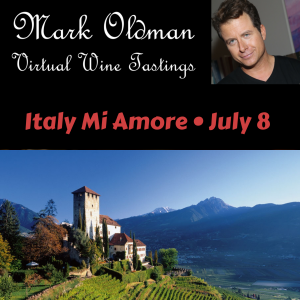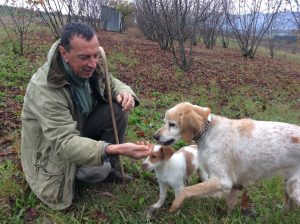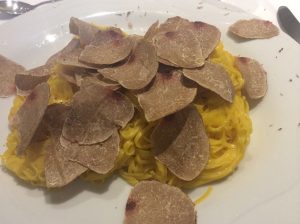This Wednesday, June 8th 8pm ET, join me for “la dolce vita” via a wonderful survey of Italian wine. Register for this virtual tasting here.

For more about Mark’s virtual wine tastings, please visit this page.
Learn About Wine from America's Wine Expert

The best habit a wine lover can pick up is experimentation. I won’t tell you that venturing into the obscure always procures a winner, but you’ll be surprised how quickly your palate develops and the nuances you start to notice when you take a few walks on the wild side. And who doesn’t want to show up to the party with a brand new bottle no one’s ever heard of?
The appeal of esoteric wines is not always in their taste; sometimes they generate desire by the mere fact they play hard to get, while their taste is middling or even disorienting.

Disclaimer aside, novel grapes and regions that actually make delicious wine can be dazzlingly revelatory and economical. If you agree with Ernest Hemingway’s recommendation of “life intoxicated by the romance of the unusual,” then the following wine types will send you off buzzed with the thrill of discovery (in alphabetical order):
AGIORGITIKO (AH-YOR-YEE-TE-KO, A GRAPE VARIETY, GREECE)
Dark Greek red redolent of spicy blackberry and plum, sometimes with a smoky dimension; medium-bodied, but occasionally plumper; you’ll earn a vinous black belt by pronouncing it correctly.
KERNER (A GRAPE VARIETY, ITALY AND GERMANY)
Vaguely militaristic sounding white primarily from Italy’s Alto-Adige region; fresh and floral, like a grapefruit-y Riesling; possible notes of peach or orange peel; mineral-laced finish; high quality, complex, and priced like it.
RIBEIRA SACRA (REE-BEAR-AH SACK-RAH, A REGION IN SPAIN)
A rediscovered district of northwestern Spain making svelte, intriguing, juicy reds; from the Mencía grape, which also appears in the better-known wines of Bierzo; so far in short supply but could expand on its presence.
See if you can find these unusual delights from a specialist merchant or online. For more obscure wine types, check out my book, How to Drink Like a Billionaire, and check out the video to watch me try a bizarre white wine from Scholium Project, located just east of Napa.

Ever wonder where that elusive, $300 truffle being shaved onto pasta comes from? I took a trip to Piedmont, in north-west Italy to forage for one of these buried treasures. Giani, a veteran trifulau – who found his first truffle at age 5 – took me to one of his secret spots with his trusty dog, Lady, and a puppy in training, Lila. (watch the video where you will see how crucial these dogs really are to the whole endeavor.)

Hailed as the “diamond of the kitchen”, the white truffle from Alba is among the most expensive in the world, commanding up to $700 per 3.5 ounces depending on the quality of the supply. While the black truffle, the more common variety, is used in cooking, the rare white one should be served raw–never cooked. At most restaurants, I had it shaved over a simple bowl of pasta in butter.

As for what to pair with white truffles, Barolo and Barbaresco are the most prestigious wines of Piedmont (and mighty delicious). For a less expensive alternative, Barbera is a fine choice and it doesn’t require aging. These wines are medium-to-full bodied with aromas of strawberries, violets and sometimes minerals or tar.
Like a lot of Italian reds, they can have prominent acidity and/or tannins, so be sure to have your bowl of tagliatelle pasta with butter and shaved truffles at the ready.
For more on Italian wine and food pairings, grab a copy of my book, How to Drink Like a Billionaire, and check out the video to see what I dug up!